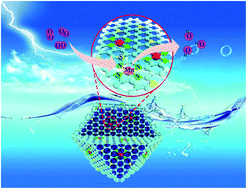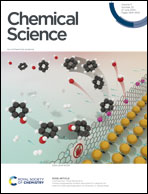Engineering a metal–organic framework derived Mn–N4–CxSy atomic interface for highly efficient oxygen reduction reaction†
Abstract
Atomic interface engineering is an effective pathway to regulate the performance of single metal atom catalysts for electrochemical reactions in energy applications. Herein, we construct a sulfur modified Mn–N–C single atom catalyst through a metal–organic framework derived atomic interface strategy, which exhibits outstanding ORR activity with a half-wave potential of 0.916 V vs. RHE in alkaline media. Moreover, operando X-ray absorption spectroscopy analysis indicates that the isolated bond-length extending the low-valence Mn–N4–CxSy moiety serves as an active site during the ORR process. These findings suggest a promising method for the advancement of single atom catalysis.



 Please wait while we load your content...
Please wait while we load your content...